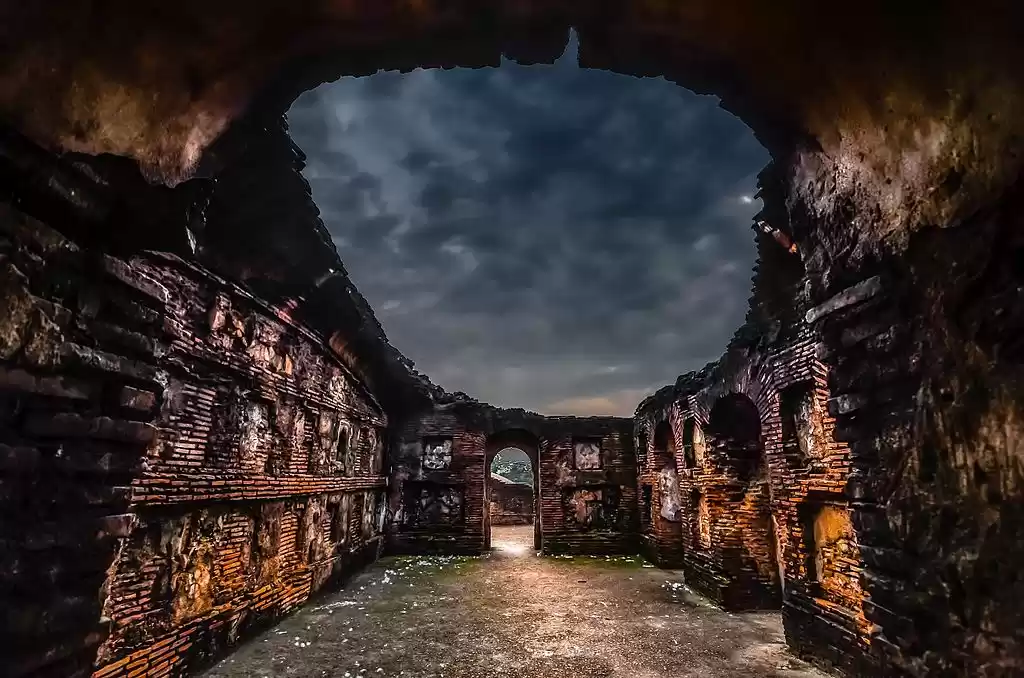
Assam is a state rich in history, mainly due to its multi-ethnic nature. While the Hindu Assamese are a major part of the state, there are several tribes and communities that live along the plains of Brahmaputra and also the hills of the state. One such community, the Ahoms, ruled Assam for 600 years and were influential towards the culture of the state. In fact, the name 'Assam' comes from the word 'Asam', which is a Sanskritisation of the word, 'Aham' or 'Ahom'. We will explore the Ahom history through their capital city Sibsagar.
History of Ahom dynasty
The Ahom dynasty was founded by Sukaphaa, a prince from Mong Mao in current day Myanmar. Sukaphaa belonged to a clan of people known as the 'Shaan'. These people can be found in Myanmar, Thailand and China. The Shaans had their own religion which was neither Hindu, nor Buddhist. Nor did the earliest Ahom rulers embrace Hinduism. However subsequent rulers who were born and grew up in Assam embraced the religion and appointed ministers and priests who were Hindus.
The future generations of Ahoms considered themselves to be descendants of the Lord of Heaven, Indra. Hence the kings were termed as 'Swarga Deva' or Lords from Heaven. Various queens also held the helm for a while and they were called 'Bor Raja'.
The rule of Ahoms was never entirely peaceful. There were several skirmishes with kingdoms from Myanmar and China. The Mughals, in their bid to conquer all of the land near the major rivers of India, also attacked the fertile Brahmaputra valley. To their credit, the Ahoms outlasted all the battles and lasted nearly 600 years from the 13th century to the 19th. They were one of the few Indian dynasties who remained undefeated against Islamic invaders.
The downfall of the Ahoms was not brought about by outsiders, but due to internal strife among themselves. The lust for power and the king's throne was too enticing for the Ahom nobility, ministers and clergy, who took turns usurping one king after another and finally ending up with rulers who were not good at warfare. From being a lineage of Indravamsa Kshatriyas skilled in warfare, the Ahoms rulers became petty politicians. The Moamoria rebellion, an internal revolt among the classes of Ahoms, followed by a full-fledged Burmese invasion broke the back of the Ahoms in the early 19th century. This was followed by a swift attack by the British leading to the first Anglo-Burman war. With the Ahoms killing each other and the Burmese weaponry being no match for the British army, the East India company practically had a cake walk with little resistance. They promptly annexed all of the Brahmaputra valley and also Burma with the treaty of Yandabo in 1826.
Descendents of Ahoms still live in Assam, mainly in Sibsagar district. They are no longer royalty, but regular citizens of Assam and India. Their Ahom / Tai language has been replaced by the state-wide Assamese language.
Sibsagar
As the Ahom rulers embraced Hinduism and Assamese language, they established their capital at Sibsagar, a local pronunciation of the word Shiva Sagar. At Sibsagar, you can find the Sibsagar lake and Ahom-style buildings such as Rang Ghar, Talatal Ghar, Shiva Dol, Devi Dol and Bishnu Dol. Let's look at each of them.
Sibsagar lake
Sibsagar or Shiva Sagar is a lake, also known as a tank, built by queen Ambika, wife of Ahom king Shiva Singha. The lake is also called Bor Pukhuri or the Chief Lake. The area and the ring road around the lake is the most important locality in the town. Three temples, viz. the Shiva Dol, Devi Dol and Bishnu Dol are situated around the lake. Also seen are the municipality office, district collector's office and the Ahom dynasty museum. It is said that the water level in this lake never changes despite the season.
The Shiva Dol is a large Shiva temple situated on the southern bank of the Sibsagar lake. The temple was commissioned by queen Ambika, who also commissioned the Sibsagar lake. The temple's sanctum is 104 feet (31 metres) high. At the top of the dome above the sanctum is a 7-feet (2.3 metre) high tip made of gold. The walls of the temple are carved with several motifs and sculptures of stories from mythologies and also those of deities.
Devi Dol
Devi Dol is a temple dedicated to Goddess Durga. It is also on the southern bank of Sibsagar lake. This temple is 60 feet (18 metres) high. Navratri festival is an important event for this temple and people visit from all over Assam.
Bishnu Dol
Bishnu Dol is one of the most unique Vishnu temples in India. It is to the west of Devi Dol. Similar to Devi Dol, this temple is also 60 feet (18 metres) high. The Vaishnavites of the Ahom dynasty did not believe in idol worship. They believed that God is in everyone and that we must seek Him within ourselves and must worship innately with the God in mind. No form must be used to represent God in the form of a deity. As a result, the Bishnu Dol has no idol inside the sanctum sanctorum. Similar to the Golden Temple in Amritsar, the Bishnu Dol has a book inside the main chamber. It is Srimanta Shankaradeva's Naamghosa, a book that recites praises of Lord Krishna.
Rang Ghar was the royal pavilion and games arena commissioned by king Pramatta Singha. Here the royal family and noblemen used to watch duels between men (such as wrestling), birds (such as cock fight) and animals (such as bull fight and elephant fight). The area around the pavilion is manicured with floral gardens.
Talatal Ghar translates to a 'house under the ground'. It is an Ahom palace which has 7 levels, but 3 of the levels are under the ground. The palace is also the source of two secret underground passages and was used to escape invasions and seek reinforcements from the surrounding kingdoms. The purpose of Talatal Ghar was military rather than as a luxury. It was built during the rule of king Rudra Singha. The underground sections and passages are now sealed and off-limits for the public.
Conclusion
While we study plenty about the rulers from the north and west of India, little is known about major dynasties in the east of India. A visit to Sibsagar was a an eye-opener to a dynasty that has ruled a major river valley for more than half a century. It left us wondering how many dynasties ruled this country and how many of them, even though long-standing, were unheard of and never taught in schools. Covering a country like India through school syllabus is a massive task and hence one must visit the length and breadth of this country to know more. Why not pay Sibsagar a visit and learn about the Ahoms?
Frequent searches leading to this page:-
best assam tours, assam tour operators, assam tour package from guwahati, assam meghalaya nagaland tours, assam tourism places to visit




























